Collaborative post
Composting Ideas, Tips & Guides

Aster Yellows
Recently, the Home and Garden Information Center (HGIC) has been receiving photos of coneflowers (Echinacea purpurea) that are malformed and green. The plants are infected with aster yellows, a bacterial phytoplasma (a type of bacterium that does not have cell walls). Aster leafhoppers (Macrosteles quadrillineatus) carry the pathogen and infect the plant tissue when they feed on it. They are small olive-green to tan insects with wedge-shaped bodies. Adults are 1/8 in length and have three pairs of spots on their heads.

A Less Striking Addendum
I failed to say that the reconfigured rose garden featured yesterday is far from a ‘fait accompli’, and won’t be completed till much later this year or probably into the next. Firstly, I need to do something with the six slabs removed from the central area, the largest of which are 30″ x 18″ and all of them far heavier than they were when the last rose garden layout was established back in 2012. Although they are concrete, they are cast from moulds of real flag stones and there is a pleasing variation between them. We used these extensively when we laid the paved area and many of the paths and, although they were fairly reasonably priced when we first bought them, prices have escalated as we found when planning another project more recently – and hard to source, especially singly. At the moment, I cannot see where we might use them, but I am reluctant to get rid of them and they will need to be stored – which involves moving them… Then there are those nine bags of rubble (already moved down to the front of the house)…fortunately a local friend is happy to take rubble to fill in a boggy area where she stables horses…
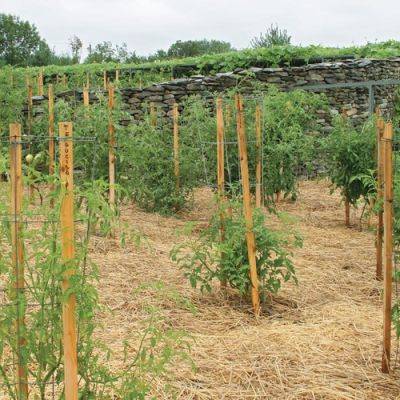
What’s the Best Mulch for Veggies? Pros and Cons to 6 Types of Mulch
Let’s face it: Mulching isn’t a glamorous job. It’s dusty, dirty, and can be downright backbreaking. But despite all the effort involved in the task, mulching your vegetable garden properly at the start of the growing season pays big dividends as the weeks progress. With a 2- to 3-inch-thick layer of mulch in place, trips to the shed for a hoe, cultivator, or hand weeder become few and far between; the hose stays coiled on its reel; veggie roots remain insulated from temperature extremes; and soil-borne fungal spores stay far away from plant leaves. There’s no doubt that the benefits of mulch are many, but the truth is that not all mulches perform the same.

How to Grow a Bacopa Plant
Bacopa is a trailing perennial that is perfect for hanging baskets, containers and providing ground cover at the front of borders. Originally from South Africa, it is grown as an annual in the UK, because it isn’t frost hardy and won’t survive temperatures below 5ºC. It produces a mass of tiny flowers over a long period, from June through to October, in either white, pink or blue.

How to Grow and Care for Watermelon Plants
Sweet and juicy, freshly harvested watermelon is a delicious treat and tastes far superior to what you can buy in the shops. Part of the cucurbit family, watermelon plants look similar to courgette and squash plants, with flat, green and slightly furry leaves followed by yellow flowers and fruit. They can be left to scramble across the ground or trained to climb a frame, where they take up less space. Like other types of melon, watermelons need up to three months of sun and heat to produce ripe fruit, which means success relies on a long, hot summer.

Common Hydrangea Pests and Diseases: Identification, Prevention, and Treatment
As one of the most popular flowering shrubs for the modern landscape, it is no surprise that we are now seeing more evidence of various diseases and insect damage on Hydrangea sp. It was once a plant rarely afflicted by pests, but extensive use in the landscape has created more opportunities for common pest problems.

The Best Wormeries On Test
A wormery is a great way of recycling kitchen and small amounts of garden waste, using worms to turn this material into nutrient-rich natural compost. A sump within the wormery also holds any excess liquid produced during this process and this can be used to feed your plants too. Simply drain it with the tap, every few days, dilute it to a 1:10 ratio of water and you have a nitrogen-heavy liquid feed ready to use. Wormery composting worms are different species to the earthworms you see in your garden, which aren’t suitable, and are known as brandlings, red, manure or tiger worms. They live inside the waste in the wormery bin and thanks to big appetites and a fast metabolism, quickly break down food waste likeegg shells, vegetable peelings and tea bags and turn them into compost for your garden. For help getting started our helpful step-by-step guide explains how to set up a wormery

How To Use Coffee Grounds In The Garden, According To Experts
If a cup of coffee (or several!) are part of your morning or afternoon routine, it's likely that you've tossed a lot of grounds. Coffee grounds are actually full of organic matter and are wonderful to add to the compost pile to create a nutrient-rich amendment. There have been some misconceptions about used coffee grounds and whether it's a good idea to add them directly to your soil, and your houseplants.

Improved Herbs
One of the best things about being in the plant business for over 40 years has been trying out new and rediscovered plants. Every year I like to grow the latest perennials and annuals, testing them to see if they’re worth ordering again the following year. The herb garden—though it seems a pretty staid and quiet sanctuary—has actually had its share of exciting new plants too. Visions of sauces and meats, drinks, and pastries flavored with delicious herbs tended by my own hands are all the inspiration I need to try something for the first time. Additionally, these plants add color, texture, and scent to my containers and gardens. In many cases, I’ve been pleasantly surprised to find that these improved options are actually better looking and/or tasting than the familiar staple. The following are some of my favorite herb varieties. Some are new—and some have simply flown under the radar for far too long.

Worm Casts in Lawns
What are worm casts?

GPOD Vignettes: A Succulent Front Yard, New Blooms from a Zesty Plant, and a Compost Cake
Happy Friday GPODers!
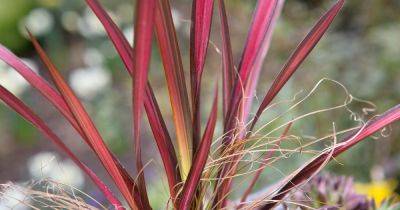
How To Grow Phormium
New Zealand Flax, or Phormium, is a handsome long-lived evergreen shrub that forms bold clumps of elongated sword-shaped leaves. The attractive, often colourful foliage looks good all-year round, and makes the perfect foil for other plants in borders, raised beds, gravel gardens and pots. Leaf colour is extremely varied and includes olive-green, purple, yellow, cream, red and apricot variegations, in wide or fine stripes.

How to Transplant Bird of Paradise Plants
How to Transplant Bird of Paradise Plants

10 of the Best Tall Indoor Plants to Grow
House plants bring an extra dimension to your home. Many have evergreen foliage that adds colour and texture, and they create a natural atmosphere that helps promote feelings of calm. Tall house plants are ideal to add structural elements to a room and define the style of the space. With the huge amount of choice that’s now available, you can opt for the dramatic impact of a plant with bold foliage, such as the fiddle leaf fig, or go for a softer look with the wispy fronds of the asparagus fern or the cascading leaves of the ponytail palm.

Are Coffee Grounds Good For Tomato Plants?
Creative gardeners are always looking for ways to boost production. One topic that gets a lot of buzz in garden forums is using coffee grounds to fertilize plants. Coffee grounds can provide benefits to many plants, including tomatoes, but the impacts vary depending on how they are used. Learn how to effectively incorporate coffee grounds into your gardening routine to supplement tomatoes and other garden plants.

How To Garden Using Food Scraps for a More Sustainable Garden
Sustainable gardening has been getting more and more popular every year—and for good reason.
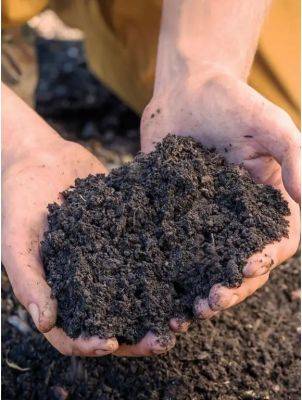
Garden Guide
Adapted from Rodale’s All-New Encyclopedia of Organic Gardening, pages 541-550, with permission from Rodale Institute

How to Care for a Monkey Mask Plant (Monstera adansonii)
Monstera andansonii is officially known as the Mexican breadfruit plant although it’s more commonly known as the monkey mask plant. There are a few theories as to where this name comes from – that the shape of the leaf and its hole resembles a monkey’s face, or that monkeys use the leaf to hide behind, like a mask, peering through the holes. It’s a tropical perennial that makes a bold and beautiful house plant in the UK. Monstera adansonii is less vigorous than its relation Monstera deliciosa, and a good choice if you love architectural foliage plants but are limited on space.

How To Grow Your Own Gooseberries
Gooseberries are delicious cooked in pies or swirled into sweetened cream to make a gooseberry fool. They’re easy to grow, and just a single bush will reward you with masses of berries for up to 15 years.
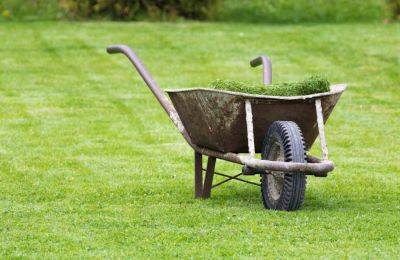
What Should You Do With Grass Clippings After Mowing Your Lawn? An Expert Weighs In
There’s nothing like the clean lines of freshly cut grass. But, what if we told you skipping your final step of bagging those grass clippings can actually help you grow lusher, thicker grass—and at no additional cost to you? Allowing your mower to leave behind grass clippings can have a variety of benefits for your lawn.

How to Create a Vegan Garden for Organic Harvest
Stay true to your vegan lifestyle with your own homegrown produce! This guide will teach you the basics of vegan gardening, using all-natural methods to get organic and delicious harvest. Let’s get our hands dirty!

My acer looks dead. How can I help it?
Q: I recently repotted my acer into a bigger pot, however it now is looking dead. Can you offer any advice? WT, England

Smart strategies to get plants to grow in stony ground
In our new-old country garden, right next to the small farmhouse that has stood on the gently sloping site for more than 200 years, is a patch of sun-baked ground so stonily resistant to the sharp tines of a garden fork or the steel blade of a spade that I have had to find clever ways to get plants to grow.

Problem Solving: Chafer Grubs
Chafer grubs are the larvae of chafer beetles in the family Scarabaeidae, which also includes dung beetles. There are eight species of chafer beetle in the UK. Some can cause issues in lawns, but many do not. In fact, some chafer beetles are pollinators, while some larvae help break down decaying matter. What’s more, chafer beetles and their larvae form part of healthy ecosystems, providing food for a range of birds and mammals.

Free flower seeds 2024 - June
June growing with Cel

How to Grow and Care for Bamboo Palm (Rhapsis Excelsa)
The bamboo palm (Rhapsis excelsa) is an elegant evergreen fan palm. It has bamboo-like stems and fronds of long dark green leaves with blunt ends, making it an unusual, yet attractive, house plant. Several other house plants are also referred to as the bamboo palm, including Dypsis lutescens (also known as the Areca palm, golden cane palm or butterfly palm) and Chamaedorea seifrizii.

Leaf Mulch: How to Make and Use Leaf Mulch in the Garden
Using leaf mulch in the garden is one of the best ways to build soil, reduce weeds, retain moisture, and insulate plants. Plus, you can turn mulched leaves into leaf mold which saves money on buying compost and other soil amendments. In this article I’ll show you three easy ways to make leaf mulch and how to put it to work in your garden. What is leaf mulch? Leaf mulch is a layer of leaves applied to the soil surface around plants. It’s made from fallen leaves, whic

8 Facts About the Fascinating Roly-Poly
The roly-poly, or pill bug, is a terrestrial crustacean that looks just like an insect. Oval-shaped, with seven sets of legs and a hard outer shell, these creatures are best known for their ability to roll themselves into a perfectly shaped ball when threatened.

Ideas for real gardens from Chelsea Flower Show 2024 | House & Garden
The goal from a visit to the Chelsea Flower Show is to come away with your head full of ideas and inspiration. Sometimes the show gardens can feel unattainable – too esoteric, too wild or too zany for your own back garden. This year however there are plenty of clever, stylish and down-to-earth gardens that offer ideas for real gardens. Here are a few of the best.

Closing the Loop on Poop
Around 6.5 tons of [mostly] plastic-wrapped dog poop winds up in landfills in the United States every year. As most cities see it, that’s the only safe option.

How to Grow and Care for Tradescantia
Tradescantia has more than 65 species, native to North, Central and South America. Many are hardy and can be grown outdoors but several of the tropical species, which are tender, have become popular house plants in the UK. These include the variegated silver-striped Tradescantia zebrina, Tradescantia fluminensis, which has small leaves, trailing stems and white flowers, and Tradescantia cerinthoides ‘Nanouk’, with variegated pink and purple leaves that have green and white stripes.

Organic matter goes a long way in garden beds
Reviews and recommendations are unbiased and products are independently selected. Postmedia may earn an affiliate commission from purchases made through links on this page.
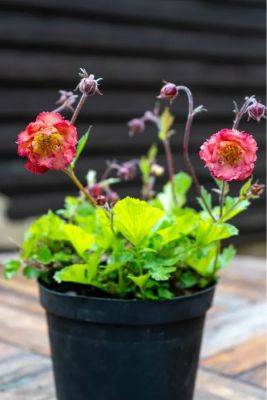
7 beautiful border plants to plant in spring (plus planting tips!)
If you buy your garden border plants from the people who grow them, you’ll benefit from their expert advice and knowledge.

10 Smallest House Plants for Tiny Spaces
If you have limited space indoors, there is still a range of house plants you can buy to add greenery to your home. Succulents and cacti offer the biggest choice of small house plants, but there’s a wealth of other varieties to enjoy, from air plants that grow without compost to the carnivorous Venus flytrap. As well as small plants, look for slow-growing house plants that take time to reach their mature height, such as the nerve plant. Windowsills, desks, hanging planters and shelves can all be enhanced by space-saving house plants.
Popular Topics
The "Composting" section on DIYGarden.cc is your comprehensive guide to harnessing the power of organic waste and creating nutrient-rich compost for your garden. Composting is a natural and sustainable process that not only reduces waste but also enhances soil health and promotes greener living.
Composting is a natural process that involves the decomposition of organic materials to create nutrient-rich compost. It is a way to recycle and transform organic waste, such as food scraps, yard trimmings, and other biodegradable materials, into a valuable soil amendment.
Composting occurs through the activity of microorganisms, such as bacteria, fungi, and worms, which break down the organic matter into simpler compounds. The process requires a balance of carbon-rich materials (often referred to as "browns") and nitrogen-rich materials (known as "greens"). Browns include items like dried leaves, straw, and wood chips, while greens include grass clippings, fruit and vegetable scraps, and coffee grounds.
To start composting, a compost pile or bin is created where the organic materials are layered. It's important to maintain the right balance of browns and greens, as well as proper moisture levels and aeration. The microorganisms responsible for decomposition thrive in an environment that is slightly moist and well-aerated.
At DIYGarden.cc, we are passionate about sustainable gardening practices, and composting plays a vital role in reducing waste and building healthy soils. Join us in embracing the art of composting and unlock the transformative potential of organic waste in your own backyard.
Our site greengrove.cc offers you to spend great time reading Composting latest Tips & Guides. Enjoy scrolling Composting Tips & Guides to learn more. Stay tuned following daily updates of Composting hacks and apply them in your real life. Be sure, you won’t regret entering the site once, because here you will find a lot of useful Composting stuff that will help you a lot in your daily life! Check it out yourself!

